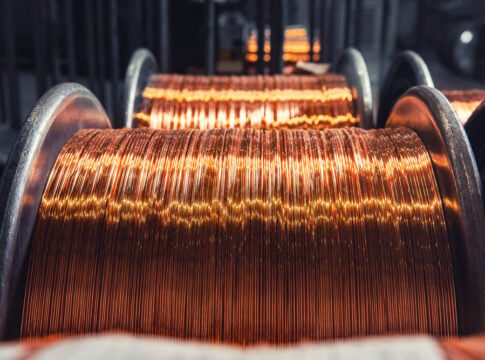The rapid global rollout of artificial intelligence (AI) data centers is set to add new pressure to the already strained copper market. A recent BloombergNEF (BNEF) report warns that:
- Copper supply gap could swell to 6 million tonnes by 2035 if demand keeps rising at this pace.
- Copper demand from AI-powered facilities will average about 400,000 tonnes a year over the next decade, peaking at 572,000 tonnes in 2028.
- By 2035, the cumulative copper locked into data centers could surpass 4.3 million tonnes.
Furthermore, this rise comes as other copper-hungry industries, like power transmission and wind energy, are also using more of the metal. BNEF expects their copper demand to almost double by 2035. Together, they are putting heavy pressure on a market already held back by years of low investment in new mines.
Why AI Data Centers Are So Copper-Intensive?
Copper may account for up to 6% of a data center’s capital costs, but its role is essential. The metal’s unmatched electrical conductivity ensures efficient power transmission, while its high thermal conductivity supports heat exchangers vital for cooling AI-intensive servers. That’s why cables, busbars, power distribution strips, connectors, transformers, and cooling systems all rely heavily on copper.
Its ductility and malleability also allow it to be shaped into compact connectors and other components critical to space-optimized server rooms. From high-capacity cabling to switchgear and transformers, copper is woven into every layer of a data center’s infrastructure.
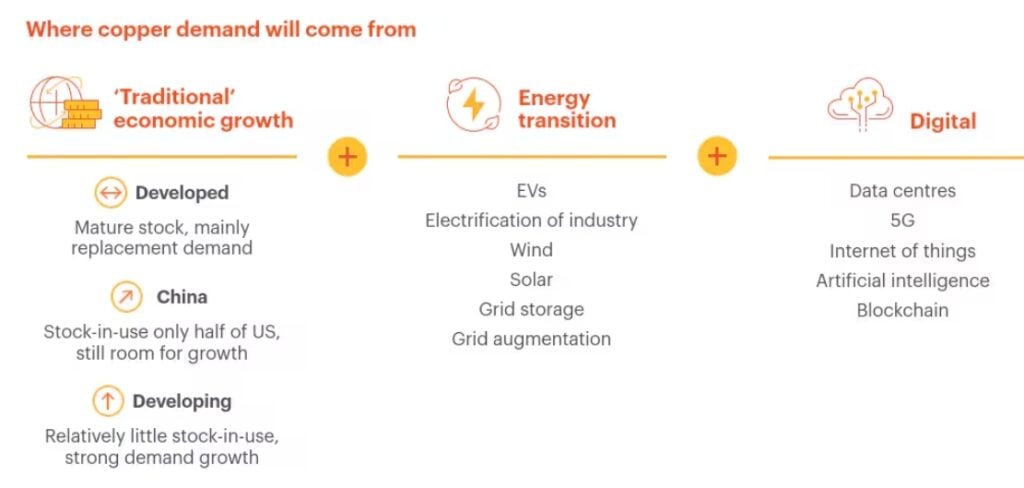
Mining giant BHP predicts:
- Copper demand will rise 72% by 2050 — driven largely by AI infrastructure and the clean energy transition.
- By 2050, it could hit 3 million tonnes per year. That would lift the sector’s share of total global copper consumption from about 1% today to as much as 7% by mid-century.
Case studies illustrate the scale: Microsoft’s $500 million Chicago data center, completed in 2009, used about 2,177 tonnes of copper — roughly 27 tonnes per megawatt of power capacity. With AI-ready racks increasing power needs, the copper footprint per site is growing.
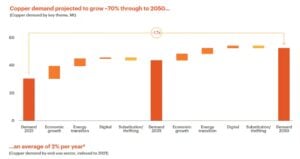
Growth Projections Paint a Steep Climb
Similarly, a Macquarie analysis estimates that by 2030, data centers could consume between 330,000 and 420,000 tonnes of copper annually, with a midpoint of 375,000 tonnes. This projection factors in recent mega-project announcements from Microsoft, Meta, and the $500 billion Stargate Project to build OpenAI infrastructure in the U.S.
It also accounts for a forecast jump in required data center power capacity from 77 gigawatts in 2023 to 334 GW in 2030.
- Goldman Sachs says AI will drive a 165% increase in data center power demand by 2030.
- This means this massive leap will require extensive copper use for both on-site systems and the wider electrical grid.
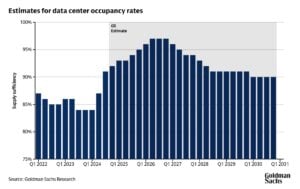
The Grid Connection Factor
Moving on comes the grid connection factor. As Colin Hamilton of BMO Capital Markets notes, the copper demand story isn’t just about what’s inside the data center. He says, “Data centers themselves are becoming incrementally less copper-intensive, but getting the electricity to them, that is copper-intensive.”
That means transmission lines, substations, and grid upgrades, all of which use large volumes of copper. In the era of AI, hyperscale campuses will need multiple redundant grid connections to ensure an uninterrupted power supply, further boosting copper demand.
Additionally, the scale of investment is staggering. North American data center infrastructure spending is expected to rise from $33 billion in 2020 to $70 billion by 2030 and $185 billion by 2040. Each new AI-ready site locks in thousands of tonnes of copper for decades.
What’s Driving the Copper Market Now?
On August 1, the U.S. imposed a 50% tariff on copper imports to boost domestic production. This policy could benefit major U.S.-based miners like Freeport-McMoRan and Rio Tinto, but some industry players warn it could cause short-term disruptions. The news hit just as Goldman Sachs lowered its 2025 copper price forecast on weaker Chinese demand.
However, following the BNEF report on future shortages, copper stocks like Freeport-McMoRan and the Global X Copper Miners ETF fell as investors weighed the combined effect of tariffs and market forecasts.
Analysts still expect a long-term crunch, projecting a 6 million-tonne shortfall by 2035 as AI data centers and clean energy projects drive demand higher.
Copper Price Volatility and Shocks
Copper prices plunged more than 20% after the tariff announcement, partly due to speculative trading, arbitrage, and stockpiling. In short, the “tariff trade” quickly unraveled in the U.S. market.
BNEF believes this is temporary, forecasting a price peak of $13,500 per tonne in 2028 as demand outpaces supply. By 2035, global output could reach just 29 million tonnes, well below the 35 million tonnes needed.
J.P. Morgan takes a cautious view, predicting prices could dip toward $9,100 per tonne in Q3 before recovering slightly to around $9,350 in Q4.
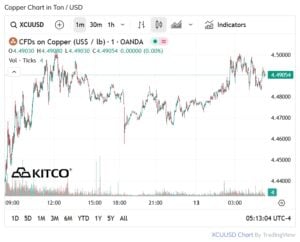
AI Turns Copper into a Bottleneck
AI-ready data centers are changing the copper demand story. Unlike electric vehicles, which add demand gradually, these facilities need massive amounts of copper all at once — from utility-scale wiring and high-voltage tie-ins to dense cabling inside the building.
With mine development taking more than a decade, the AI-driven copper crunch could arrive sooner than expected. For miners, utilities, and tech giants, this collision of digital expansion and material scarcity is set to be one of the biggest industrial challenges of the next 20 years.
The post Data Centers’ Copper Hunger: How AI is Driving a Looming Supply Crunch? appeared first on Carbon Credits.
Carbon Footprint
ENGIE Lands $600M from World Bank Group and Investors to Boost Peru’s Renewable Energy
The International Finance Corporation (IFC), part of the World Bank Group, approved up to $600 million in funding to support ENGIE Energía Perú’s push into non-conventional renewable energy. Of that, $250 million is from the IFC itself, and an additional $350 million comes from other mobilized investors.
The financing structure is a Sustainability-Linked Loan (SLL), which links financial terms to performance goals. Let’s uncover where the funds will go and how this will help ENGIE’s net zero and climate goals.
Where Will the Money Go?
The goals of the fundraising are to expand renewable energy, support climate adaptation, and promote gender diversity initiatives. The first tranche of $120 million will immediately fund the acquisition and development of key renewable infrastructure.
The first installment will finance these three major projects:
- Expand the Intipampa Solar Plant: Increase capacity by 51.4 MW in Moquegua, boosting total solar output.
- Wind Farm Acquisitions: Acquire existing wind capacity of 36.8 MW at the Duna and Huambos sites.
- Battery Energy Storage System (BESS): Develop or refinance the 26.5 MW Chilca battery system—the largest in Peru—to improve grid flexibility.
These investments help ENGIE reach its goal of adding 800 MW of non-conventional renewables in five years. This will transform the country’s energy mix.
ENGIE’s Power Play in Peru’s Energy Market
ENGIE Energía Perú (EEP) is a dominant force in Peru’s energy sector. By 2024, it was the biggest electricity generator in the country. It owned about 2,694 MW from ten plants. This made up 19% of Peru’s total installed capacity and around 14% of national production.
EEP’s renewable and conventional installations include:
- Punta Lomitas Wind Farm (296 MW), the largest in Peru.
- Expanded solar capacity with Intipampa.
- Hydro and gas-fired plants such as Chilca and Ilo.
- The Chilca BESS, launched in 2023 with an investment of approximately $20 million, demonstrates its adaptability and drive for stability.
Peru’s Renewable Wave: From Hydro to Solar Growth
Peru’s electricity mix is shifting. In 2024, renewables accounted for arond 59% of electricity, with breakdowns of hydroelectricity at almost 50%, wind at around 6%, solar at almost 2%, and biomass at 0.8%.
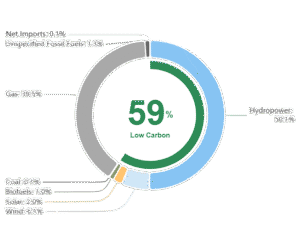
The country boasts significant untapped renewable potential:
- Hydropower: Installed capacity stands at 5.7 GW (2020), with untapped technical potential of ~70 GW.
- Renewables Market Growth: In 2022, Peru’s renewables sector generated 34,727 GWh, valued at around $900 million, with moderate annual growth in both output and value.
Looking ahead, an IFC study predicts that by 2050, wind and solar could make up 45% of installed capacity in the country. This growth will be backed by investments in grid storage, which will help improve system resilience.
Other big investments show regional growth. For instance, Spain’s Zelestra is investing $1–1.5 billion in Peru’s renewable energy. This will support mining operations with a pipeline of 1 GW capacity.
How The Loan Could Change Peru’s Grid
The $600 million SLL from IFC is more than capital; it’s a catalyst for renewable energy growth in Peru. The key benefits include:
Increased Clean Energy: The financing helps deliver over 100 MW of additional wind and solar capacity, plus the country’s largest BESS, enhancing energy diversification.
Climate Action: IFC estimates the Intipampa expansion alone will save 61,461 tonnes of CO₂ equivalent per year by displacing fossil-based electricity.
Grid Modernization: Energy storage fosters a more flexible, renewable-friendly grid and supports off-grid electrification in rural areas.
Market Confidence: The SLL’s structure signals investor belief in Peru’s green energy potential and supports broader regional ambitions.
ENGIE’s expansion is part of a broader wave of renewable growth in Latin America. In Peru, ENGIE’s projects contribute to the broader energy transition—and set an example for public-private collaboration in sustainable infrastructure.
More notably, it forms part of the energy giant’s net zero goals.
ENGIE’s Global Renewable Energy and Net-Zero Strategy
The company’s global stance reflects increasing corporate commitment to clean energy infrastructure. The infographics below shows ENGIE’s decarbonization ambitions.
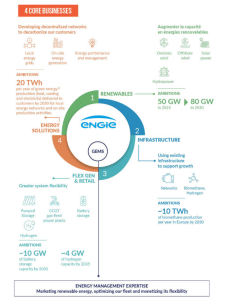
Globally, ENGIE has positioned itself as a leader in the clean energy transition. It aims to achieve net-zero greenhouse gas emissions by 2045. The company focuses on quickly increasing renewable energy capacity. It aims to phase out coal and expand energy storage solutions. This will help integrate more variable renewables.
By 2025, ENGIE targets 50 gigawatts (GW) of renewable capacity worldwide, growing to 80 GW by 2030. This expansion focuses on wind, solar, hydro, and green hydrogen projects, supported by digital tools for efficiency and performance monitoring.
ENGIE has cut its direct emissions (Scope 1) by over 40% from 2017 to 2024. This change came mainly from retiring coal assets and switching to clean energy. Below is the company’s 2024 carbon footprint.
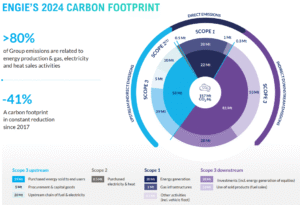
The company is investing in large energy storage, aiming for 10 GW of battery capacity by 2030. This will help keep the grid stable as more renewable energy comes online.
ENGIE’s climate roadmap includes Science Based Targets initiative (SBTi) validation, ensuring its emissions reduction pathway aligns with the Paris Agreement’s 1.5°C goal.
These global efforts reinforce ENGIE’s operations in Peru, showing how the company’s local renewable expansions contribute to a broader, coordinated push toward a carbon-neutral energy system worldwide.
Moreover, ENGIE supports strong carbon pricing policies and systems that encourage investment in low-emission technologies, energy efficiency, and reduced energy use.
As part of its path to net zero, the company plans to carry out internal carbon absorption projects and use carbon removal credits. These credits will follow the Integrity Council’s ten principles, with a focus on transparency, proving real additional impact, and ensuring that reductions last over time.
With IFC’s backing, ENGIE Energía Perú is poised to expand its renewable energy footprint significantly. The financing supports solar expansion, wind farm acquisition, and advanced energy storage. This boosts Peru’s clean energy pipeline, strengthening grid reliability, and contributing to national sustainability targets.
As Peru works toward a greener energy future, ENGIE’s investments may become a model for transformative growth across Latin America.
The post ENGIE Lands $600M from World Bank Group and Investors to Boost Peru’s Renewable Energy appeared first on Carbon Credits.
Carbon Footprint
France Eyes Bitcoin Mining Powered by Surplus Nuclear Energy
France is weighing a bold proposal to use surplus nuclear energy in Bitcoin mining, turning unused power into millions in revenue. The five-year pilot is backed by the far-right Rassemblement National (RN) party. It would use EDF (Électricité de France)’s excess electricity during low-demand hours, with heat reuse systems warming homes and greenhouses.
If approved, it could make France the first EU nation to weave crypto mining into its official energy strategy.
From Waste to Wealth: The Surplus Power Plan
France’s far-right party, RN, is backing a bold plan that could repurpose surplus nuclear electricity to power Bitcoin mining. MP Aurélien Lopez-Liguori introduced an initiative for a five-year pilot program. It aims to use excess energy from EDF-run nuclear plants for crypto mining.
The pilot allows Bitcoin mining to run only when nuclear energy is more than needed, like at night. This way, it uses power that would otherwise be wasted. Developers say one gigawatt of extra nuclear power could make $100–150 million in BTC revenue each year.
The plan also includes heat reuse systems that will capture waste heat from mining rigs. The heat can then warm homes, greenhouses, or industrial facilities. This model is already in use across Scandinavia.
Why Nuclear? France’s Energy Context
France, the EU’s top nuclear energy producer, gets over 70% of its electricity from nuclear plants. This amounts to 338,000 GWh each year. However, during low-demand periods, power supply often surpasses consumption.

France occasionally sells extra power at negative prices. Sometimes, it even pays for nearby countries to take this power, leading to losses of hundreds of millions. Bitcoin mining offers a way to monetize this surplus and ease grid stress.
Mining rigs can quickly adjust their load, providing a flexible buffer that stabilizes grid operations. This strategy supports wider energy transition goals. It helps manage inflexible nuclear output more effectively.
Political 180: From Crypto Ban to Bitcoin Boost
This move marks a dramatic shift in RN’s stance on crypto. In 2016, Marine Le Pen condemned cryptocurrencies as elitist tools and pledged to ban them. By 2022, she softened her position to support regulation. In 2025, she supports Bitcoin mining as a smart economic tool. This shows a wider trend of political practicality.
However, not all RN lawmakers agree. Jean-Philippe Tanguy, the party’s finance chief, argues that Bitcoin undermines centralized monetary control.
Meanwhile, the left and green parties oppose the plan due to its environmental impact, pointing to Bitcoin’s intensive energy use. Approval will require navigating internal party splits and environmental scrutiny.
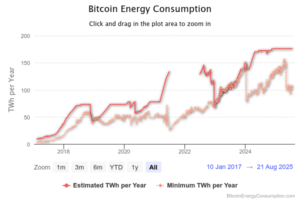
Potential Benefits and Concerns
Supporters of the proposal see several clear advantages. First, surplus nuclear power can generate revenue. Estimates show it could bring in $100–150 million each year for every 1 GW of excess output.
Second, bitcoin mining facilities can be a flexible load for the grid. They absorb extra electricity when demand is low. Then, they can power down fast when demand rises. This helps stabilize the system.
Third, the heat generated by mining rigs could be captured and reused to warm buildings or support greenhouse agriculture. This improves overall energy efficiency.
However, critics raise valid concerns:
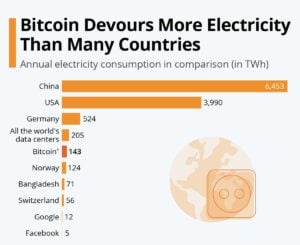
- Environmental impact: Despite cleaner power, increased Bitcoin mining still uses heavy energy. The chart above shows that Bitcoin alone utilizes more power than most countries.
- Regulatory challenges: The proposal needs strong legal and policy backing—June’s similar amendment failed on procedural grounds.
- Public perception: Tying climate-smart infrastructure to crypto may provoke resistance.
INTERESTING READ: The Energy Debate: How Bitcoin Mining, Blockchain, and Cryptocurrency Shape Our Carbon Future
Global Trends: Nuclear Meets Bitcoin Mining
This move in France aligns with growing interest worldwide in matching crypto mining with low-carbon energy. Here are some major facts to know:
- Clean Energy Uptake: More than 52% of global Bitcoin mining now runs on sustainable energy. Of this, about 11% comes from nuclear sources.
- Fuel Mix Shifts: Coal and gas once dominated Bitcoin’s electricity supply. But the share of nuclear has roughly doubled from 4% in 2021 to over 11%.
- Energy Use Scale: Bitcoin mining is energy-intensive—estimated at 176–180 terawatt-hours (TWh) annually, on par with national consumption by countries like Poland or Egypt.
- Hashrate Surge: The Bitcoin network’s computing power, or hashrate, continues to rise. As of May 2025, it exceeded 831 exahashes per second (EH/s), a 77% jump from its 2024 low.
- Adaptation to Costs: With mining profitability squeezed, miners seek cheap, stable energy like nuclear to stay competitive.
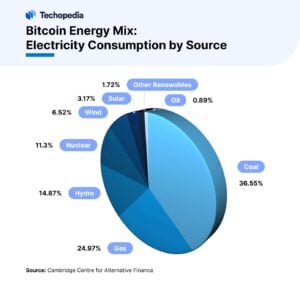
Analysts at ScottMadden argued that Bitcoin mining paired with nuclear energy offers a compelling value proposition—a clean energy use case that could diversify utility income. The business case has only grown stronger as Bitcoin prices rose from about $9,275 in 2020 to over $47,000 by 2021.
France isn’t alone in exploring this pairing. Studies suggest that Bitcoin mining might use extra power wisely. This could cut waste and help the grid stay flexible. For example, South Korean researchers found surplus electricity could be a new revenue stream for the power utility while stabilizing the grid.
Moreover, academic models propose a zero-emissions energy system. This system combines nuclear power with crypto-mining. In this setup, mining serves as a flexible load that helps balance demand. Also, many devices around the world already rely on constant nuclear power.
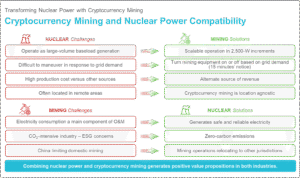
The Road Ahead: Regulation, Revenue, and Resistance
If the pilot moves forward, EDF and lawmakers would need to finalize guidelines, site mining hubs near existing infrastructure, and ensure regulatory oversight. A six-month feasibility review by the French Council of State is planned, followed by expansion if the pilot succeeds.
When that happens, France could become the first EU nation to legally integrate Bitcoin mining into its energy roadmap. It could turn an economic burden—unused power—into a revenue stream while mitigating grid stress. This would spark debate across Europe—might other nuclear-rich countries follow suit?
From a crypto standpoint, the move elevates mining from underground activity to a strategic industrial asset, redefining its role in the energy economy.
However, the plan still faces political, environmental, and technical hurdles. Yet, as the proposal gains traction, it may shape how nations view the intersection of crypto, energy policymaking, and sustainability.
The post France Eyes Bitcoin Mining Powered by Surplus Nuclear Energy appeared first on Carbon Credits.
Carbon Footprint
Fortescue and China’s $2B Green Deal: Can the Australian Iron Ore Giant Go Fossil-Free?
Fortescue, one of the world’s largest iron ore producers and a leading player in green energy, has secured a $2 billion loan from Chinese banks to accelerate its decarbonization plans. The funding is part of the company’s broader goal to achieve net-zero emissions by 2030 for its Scope 1 and Scope 2 operations.
The loan marks one of the largest green financing deals between an Australian mining company and China. It comes when demand for low-carbon industrial production is rising. This growth is due to global climate goals and investor pressure for cleaner operations.
Fortescue will use the funds for several key projects, particularly renewable energy projects. They will replace diesel-powered equipment with electric options. Also, they will invest in green hydrogen production.
Where Will Fortescue Spend the $2 Billion?
Mining is one of the most carbon-intensive industries. Fortescue operates in the Pilbara region of Western Australia. Right now, they rely mostly on fossil fuels, especially diesel. This fuels their mining trucks, trains, and power generation.
However, the company plans to stop using fossil fuels by 2030. This bold goal needs a lot of investment.
The $2 billion loan will fund infrastructure upgrades. This includes renewable energy projects, electric transport fleets, and hydrogen systems. According to Fortescue, these measures could cut millions of tons of carbon dioxide equivalent (CO₂e) from its annual emissions.
Andrew Forrest AO remarked:
“This isn’t just a financial transaction. It’s a signal of what is possible when partners are aligned in ambition. As the United States steps back from investing in what will be the world’s greatest industry, China and Fortescue are advancing the green technology needed to lead the global green industrial revolution.”
China’s Role in the Green Mining Shift
China is Australia’s largest iron ore customer and also a rapidly expanding player in green finance. By working with Chinese banks, Fortescue strengthens both its financial position and its long-term commercial relationships.
For China, supporting Fortescue’s decarbonization aligns with its own push for greener supply chains. The world’s largest emitter is working towards its 2060 carbon neutrality goal. It is urging major suppliers to cut emissions, particularly in resource-heavy sectors.
This financing could open doors for Chinese investment in Fortescue’s green hydrogen projects. These projects aim to export clean energy to global markets, like China.
- SEE MORE: China’s First-Ever Sovereign Green Bond Hits Global Market: Will It Power Its Net Zero Ambitions?
From Ore to Zero: Fortescue’s Bold 2030 Pledge
In 2024, Fortescue reported the following GHG emissions profile:
- Scope 1 and 2 Emissions: 2.72 million tonnes CO2e (combined direct and purchased energy emissions for Fortescue’s operations).
- Scope 3 Emissions: 269.31 million tonnes CO2e, roughly 100 times greater than Scope 1 and 2 combined.
- Majority Source of Scope 3: The steelmaking process downstream accounts for about 97% of Scope 3 emissions (262.16 million tonnes CO2e).
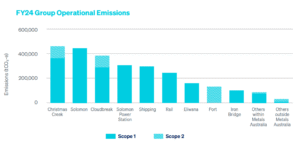
This rise in emissions compared to the previous year (2.55 million tonnes CO₂e) can be due to operational scale and fuel consumption changes.
Scope 3 emissions, mainly from steelmaking customers, stayed high at over 260 million tonnes CO₂-e. This highlights the challenge of lowering emissions throughout the value chain.

In 2024, Fortescue reported that it had already begun trials of electric mining haul trucks and hydrogen-fueled locomotives. The $2 billion loan will help scale these trials into full commercial deployment.
Fortescue aims to stop burning fossil fuels across its Australian iron ore operations by 2030. This “Real Zero” goal targets the absolute elimination of Scope 1 and Scope 2 emissions for its terrestrial iron ore business.
Fortescue’s Four Pillars of a Mining Makeover
The company is moving on four clear fronts:
- electrifying heavy equipment,
- building large renewable power,
- producing green hydrogen, and
- adding energy storage.
Fortescue plans to buy hundreds of electric machines. These machines will replace much of its diesel fleet and cut fuel use at scale.
On the power side, Fortescue is building utility-scale solar to run mines and support green hydrogen. It started work on a 190 MW solar farm near Cloudbreak. It is also seeking approval for a 644 MW solar hub at Turner River.
Together, these projects will add hundreds of megawatts of renewable energy to Pilbara operations. Large solar builds let Fortescue shift electricity away from diesel generators.
Green hydrogen forms a third pillar. Fortescue has a project in Pecém, Brazil, that produces 168,000 tonnes of hydrogen each year. They also have smaller projects, like the 50 MW PEM50 in Australia, which generates around 8,000 tonnes per year. Hydrogen can power heavy equipment or act as a feedstock for low-carbon steel.
The company has completed field trials. This includes a prototype battery haul truck called “Roadrunner.” It is now launching battery systems and transmission lines for major hubs like North Star Junction.
Still, Fortescue recently scaled back some green hydrogen plans and flagged a preliminary $150 million writedown tied to project changes — showing the plan remains costly and technically risky.
If Fortescue executes these steps, it expects to cut millions of tonnes of CO₂e from annual operations and meet its Real Zero target by 2030. These measures are central to its pitch as a miner turning into a green-energy industrial group.
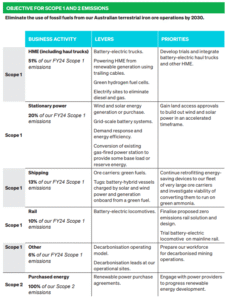
Industry Trends and the Bigger Picture
The mining industry is under pressure to reduce emissions. Investors, customers, and regulators all want cleaner operations. The International Energy Agency (IEA) reports that mining companies worldwide contribute 4–7% of total greenhouse gas emissions. This is mostly because they rely on fossil fuels for extraction and processing.
Green financing in the mining sector is becoming more common. BloombergNEF says global investments in energy transition hit over $1.7 trillion in 2024.
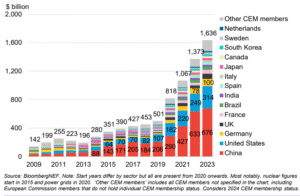
Mining projects are becoming a bigger part of this trend. Fortescue’s deal with China signals a deepening link between resource supply security and sustainable financing.
If Fortescue succeeds, it could set a standard for other resource giants. They will want to align with net-zero goals and stay profitable. It also highlights how the voluntary carbon market, renewable energy credits, and clean technology investments can converge in heavy industry.
Risks, Rewards, and the Road to Real Zero
Despite the funding boost, Fortescue faces significant challenges. Switching from diesel to electric and hydrogen machinery uses new technologies. These are unproven at this scale, so they may have reliability and cost problems. Building renewable energy in remote mining areas needs careful planning and permits.
Market risks are another factor. Global demand for iron ore depends on construction and manufacturing. Economic downturns can hurt the financial success of big decarbonization projects. Additionally, geopolitical tensions between Australia and China could create uncertainty for cross-border financing and trade.
If Fortescue achieves its 2030 targets, it could eliminate more than 3 million tons of CO₂e from its operations annually. This could be one of the first big mining companies to operate without fossil fuels. This change might lower the carbon intensity in the steel supply chain.
Fortescue’s $2 billion green loan is both a financial and strategic step forward. By getting funding from China, the company gains money for its decarbonization projects. It also strengthens its relationship with a key trading partner during the green transition era.
The next few years will test Fortescue’s ability to deploy large-scale renewable energy systems and shift its heavy equipment fleet away from fossil fuels. If the company meets its targets, it could serve as a model for how resource-intensive industries can transition toward net-zero while maintaining strong market positions.
The post Fortescue and China’s $2B Green Deal: Can the Australian Iron Ore Giant Go Fossil-Free? appeared first on Carbon Credits.
-
Climate Change2 years ago
Spanish-language misinformation on renewable energy spreads online, report shows
-
Climate Change Videos2 years ago
The toxic gas flares fuelling Nigeria’s climate change – BBC News
-

 Greenhouse Gases1 year ago
Greenhouse Gases1 year ago嘉宾来稿:满足中国增长的用电需求 光伏加储能“比新建煤电更实惠”
-

 Climate Change1 year ago
Climate Change1 year ago嘉宾来稿:满足中国增长的用电需求 光伏加储能“比新建煤电更实惠”
-

 Carbon Footprint1 year ago
Carbon Footprint1 year agoUS SEC’s Climate Disclosure Rules Spur Renewed Interest in Carbon Credits
-
Climate Change2 years ago
Why airlines are perfect targets for anti-greenwashing legal action
-
Climate Change Videos2 years ago
The toxic gas flares fuelling Nigeria’s climate change – BBC News
-
Climate Change2 years ago
Some firms unaware of England’s new single-use plastic ban

